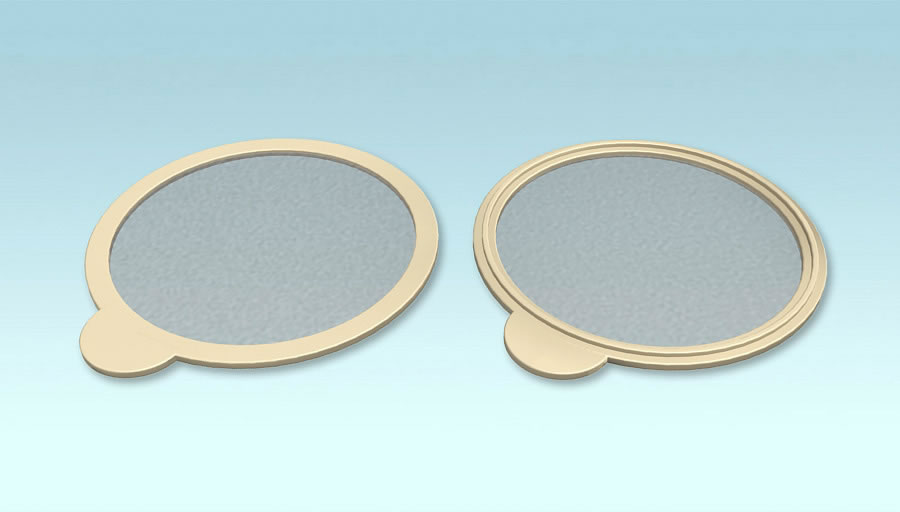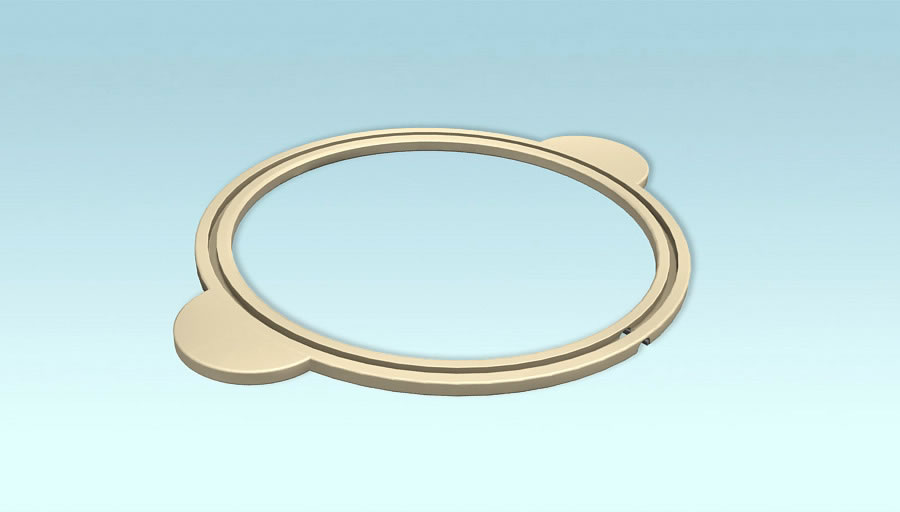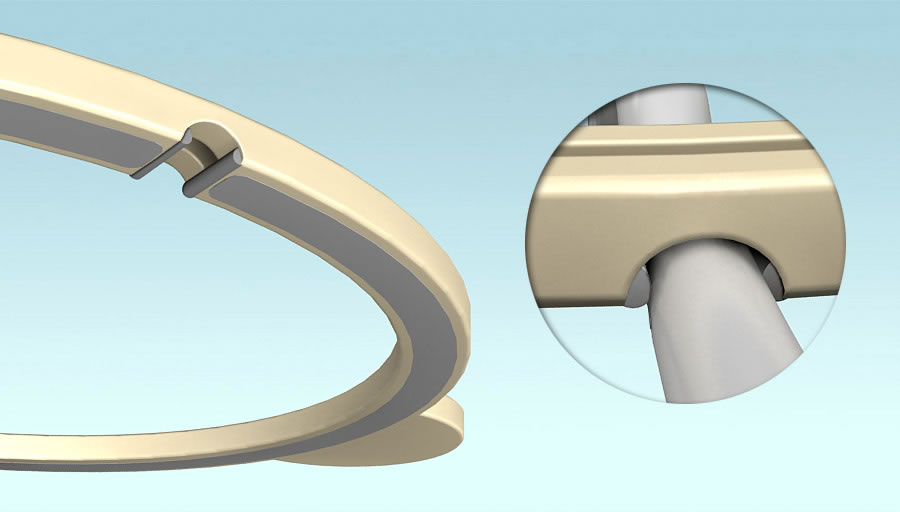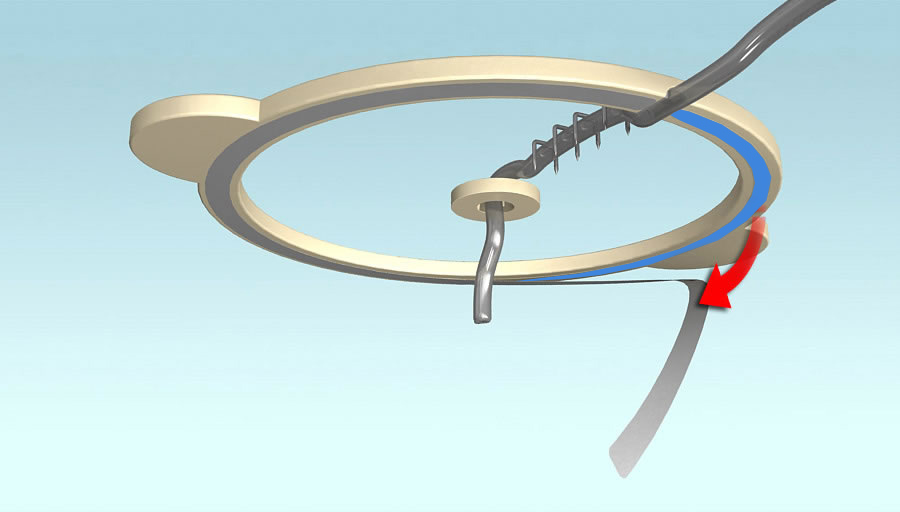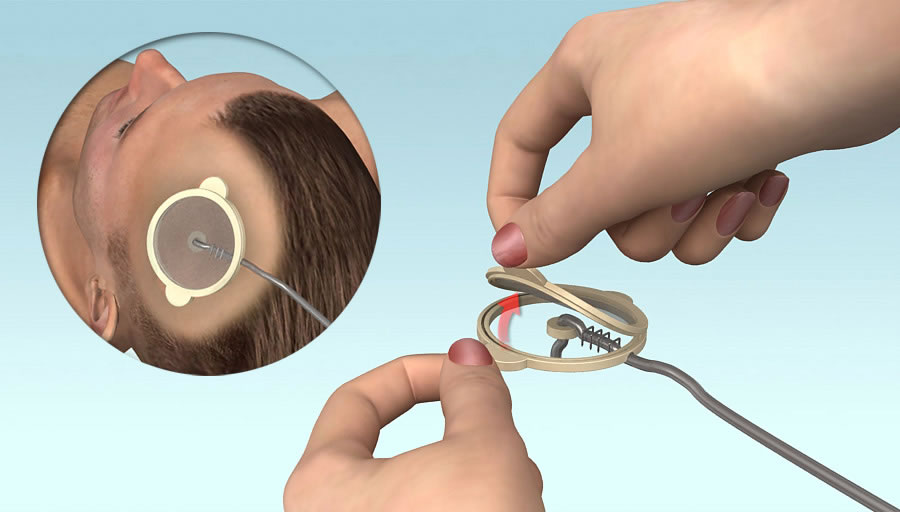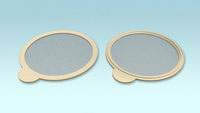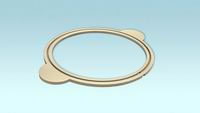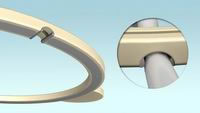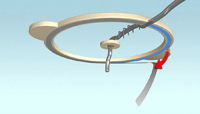Purpose & Benefits
- Provides a sterile, changeable dressing for ventriculostomy catheters.
- Sequesters a catheter where it enters the scalp, preventing infection of the catheter whose distal tip rests inside the brain.
- Secures the catheter to prevent dislodgement.
- Allows the viewing and monitoring of surgical sites for infection, skin breakdown, secure connections, or kinks in a catheter.
- Eliminates the use of staples, which disrupts skin integrity in multiple places around the site.
Problems Solved
Current standard practice for dressing ventriculostomies is the same as for central venous catheters, in that a chlorhexidine disk is often placed around the catheter and then covered with tegaderm dressing. Unfortunately, such dressings do not adhere to scalp tissue, despite the use of adjunct adhesives, but do adhere to catheters, risking dislodgement when changed, which would render the drain’s lifesaving capabilities useless. Additionally, there is no seal around the site, allowing germs to invade, which can potentially lead to deadly brain infections. There is also no stabilization method for securing the catheter, other than stapling it to the scalp in multiple places, which disrupts skin integrity.
Detailed Description & Features
The McAuley Ventriculostomy Patch is a redesigned surgical dressing, specifically for ventriculostomies, that seals itself around a catheter site and protects the catheter from dislodgement, preventing numerous complications. This innovative product may comprise a surgical dressing offered in two packs—a base pack and a change pack. The base pack can include a gasket-like foam or silicone ring with a track on the bottom that makes contact with the scalp. A gel adhesive with a peel-off backing can line the track. The base ring can also have a flexible plastic track on the underside that the ventriculostomy catheter can snap into as the dressing is placed. Even more, the top of the base can have grooves into which the window contained in the change pack can snap. Also included in the base pack can be betadine or chlorhexidine prep, skin prep or benzoin tincture, sterile gloves, mask, and gauze 4x4.
The change pack can be used to complete the dressing and can include a second flexible plastic frame window that snaps into the frame of the base gasket. The frame window can be made of a clear plastic stretch lens that is attached to the frame, and would snap into the base gasket similar to the way ostomy bags snap into base dressing around a gastric stoma. The change pack can include sterile gloves, a mask, and betadine or chlorhexidine prep.
While the base ring can remain in place for the duration of the catheter placement, the change pack can be utilized every four to seven days, or as needed to access, cleanse the site, and replace the window covering without disruption of the catheter securement.
The base ring and the top window can measure approximately 16-20 cm in diameter. Additionally, the base can measure about 5 mm tall, whereas the window can measure about 3 mm thick, making the assembled dressing approximately 8 mm thick altogether. The exact specifications may vary upon manufacturing.
Image Info
- FIGURE 1 Shows the patch from the top and bottom.
- FIGURE 2 Shows the base ring by itself.
- FIGURE 3 Shows how the catheter snaps into the ring.
- FIGURE 4 Shows the peel-away adhesive that surrounds the catheter.
- FIGURE 5 Shows how the dressing is removed without disturbing the catheter.
Contact Us
Inquiries by phone: 1-866-844-6512
